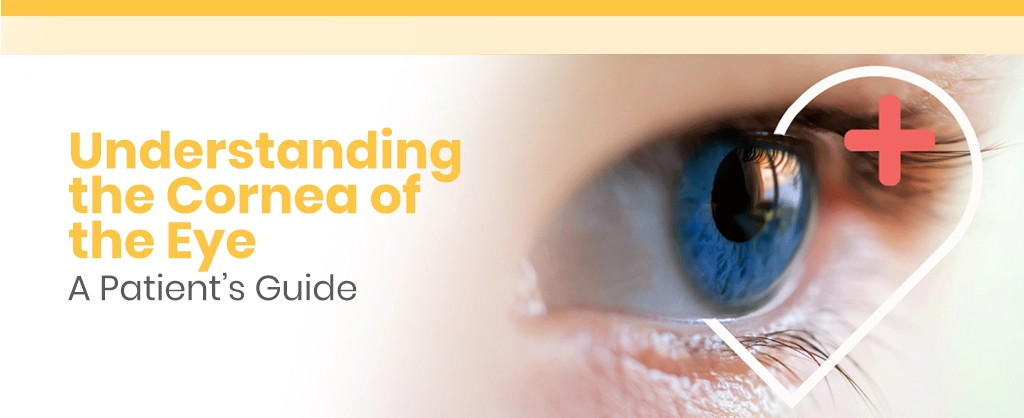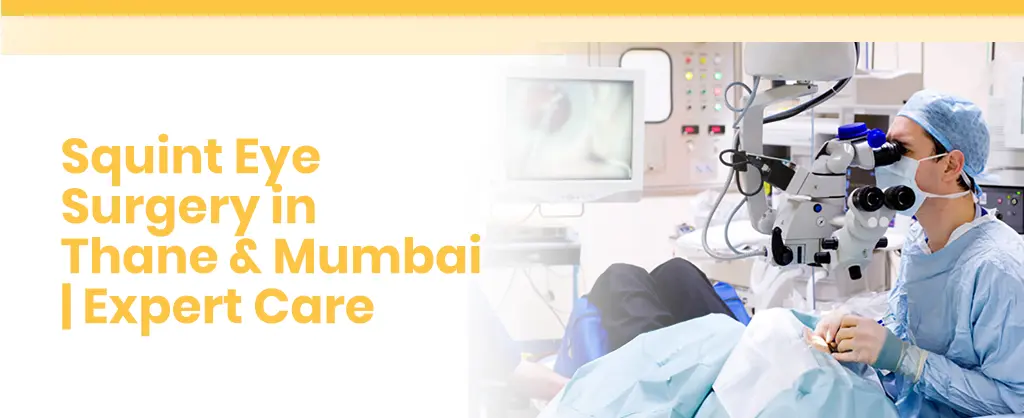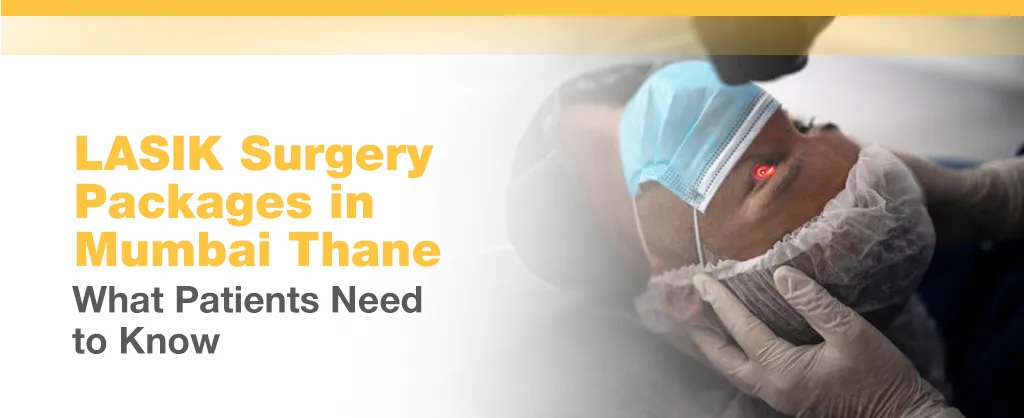The expression “the eyes are a window to the soul,” is often used when talking about the eyes and a majority of our ability to see, depends on a small part of the eye called the cornea, which is clear and thin. This clear, dome-shaped surface is located at the front surface of the eye, and has the important function of focusing light to create quality images in vision. Most of us do not think about the cornea until there is a vision problem that can be traced to the cornea. This patient-focused blog will help you understand the following: What is the cornea of the eye, how does it work in vision? What are the most common conditions and treatment options, including advanced cornea surgery Thane Mumbai.
Read Also: Corneal Ulcers Explained: Detection, Care, And Prevention
What Is the Cornea of the Eye?
The cornea of eye is the transparent, outermost layer of tissue located at the front of the eye. It covers the iris (the coloured part), the pupil and the anterior chamber. The cornea acts as a protective shield to filter out dust, germs and harmful UV rays while helping the eye’s overall shape. If you could picture a cornea of eye image it would be pictured as a clear dome tumbling over the coloured part of your eye.
Since there are no blood vessels in the cornea, nutrients are obtained from tears and the aqueous humour (the fluid inside the eye). This anatomical structure is what allows the human eye cornea to remain incredibly clear while also not starving or dying.”
Read Also: Understanding Viral Eye Infections: Causes, Symptoms, And Treatment Options
The Function of the Cornea in the Eye
The role of the cornea in the eye is important for us to see well. The cornea functions like the lens of a camera, bending light (a process called refraction) and directing it to focus on the retina at the back of the eye. In fact, almost 70% of the eye’s focusing power comes from the cornea. More than merely focusing light, the role of the cornea in the human eye is also to protect the deeper layers of the eye. The cornea is a barrier to infections, foreign materials and injury. The cornea has five layers of anatomical tissue – epithelium, Bowman’s membrane, stroma, Descemet’s membrane, and endothelium, that all serve a purpose in contributing to our vision and providing a protective layer.
Read Also: Why Contoura LASIK? 5 Reasons It’s a Game-Changer for Eye Surgery
Common Corneal Issues and Eye Cornea Damage
The cornea may be compromised by infections, injuries, or degenerative conditions. When the cornea is cloudy, thin, or irregular, it can cause blurred or distorted vision. Here are some common diseases and conditions that can affect the cornea of the eye:
- Keratoconus: A condition that occurs when the cornea thins and bulges into a cone shape, causing blurry or double vision.
- Corneal Ulcer: Often caused by an infection or injury; corneal ulcers can result in redness, pain, and sensitivity to light.
- Dry Eye Syndrome: The cornea can be irritated and damaged when tear production is insufficient.
- Corneal Dystrophy: Conditions often genetic in origin that result in cloudy patches on the cornea.
If these diseases and conditions are not addressed, they may result in significant damage to the eye cornea and visually impair the individual. Early diagnosis through a reputable cornea eye clinic or corneal specialist can avoid later consequences.
Read Also: How to Improve Eyesight Naturally? Eye Care Tips
Cornea Treatments and Surgeries
Contemporary medicine has excellent methods of rehabilitating vision and comfort to individuals with corneal eye conditions. Minor infections or trauma may be resolved with ocular medicated drops while more traumatic conditions may require surgery. In urban settings such as Thane and Mumbai, advanced cornea surgeries have been the specialty of practicing physicians to treat corneal eye disease, and they utilize the latest medical technology.
Below are some of the common treatments for corneal eye disease:
- Keratoplasty (Corneal Transplant): In these procedures, the damaged corneal tissue is removed, and a healthy donor cornea is replaced in its place.
- Phototherapeutic Keratectomy (Laser Surgery): These procedures, as the name indicates, use lasers to either reshape or clean the surface of the corneal tissue especially if there are scars.
- Cross-linking: Keratoconus is a common eye condition that can cause serious continuous thinning of the cornea, which can eventually lead to loss in vision. In these instances, corneal crosslinking has been determined to be an appropriate management strategy since it strengthens the tissues and therefore prevents more significant consequences such as further thinning of cornea.
Your choice in treatment may be dependent upon the specific disease and severity of corneal eye disease, and will most likely be determined and recommended by the examination of the eye specialist.
Read Also: The Role Of Genetics In Common Eye Diseases
Choosing the Right Cornea Eye Hospital
If you experience ongoing vision blurriness or discomfort, visiting a specialized corneal eye hospital can change everything. The ophthalmologists offer extensive experience and understanding of how to assess the condition through testing and imaging, including slit-lamp exams and comprehensive cornea scans. The clinic’s staff is also prepared with advanced microscopes and laser systems to offer precise, minimally invasive cornea surgery, when appropriate.
When looking for a corneal eye hospital or clinic, you will want to look for the following:
- Board certified ocular surgeons specializing in cornea.
- Advanced corneal imaging and surgical equipment.
- Individualized care plans.
- A strong patient safety record.
Your cornea eye hospital or clinic should not only treat the disease, but also help you get your clarity and confidence back in your vision.
Read Also: The Role Of Genetics In Common Eye Diseases
Recovery and Aftercare
The recovery time is contingent on the specific kind of treatment or surgery administered. In general, most patients can resume their normal activities within several days to a few weeks. As part of the postoperative aftercare, your doctor is likely to recommend eyewear protection, antibiotics, or moisturizing drops to ease the healing process and prevent infection. In addition, closely following your aftercare will help ensure that any corneal procedures you have performed in Thane Mumbai are successful and there are no complications following the procedure.
After surgery, you may experience some transient blurriness or sensitivity to light. This typically resolves once the cornea is healed.
Read Also: 10 Signs You Need An Eye Checkup (Don’t Ignore These!)
When to See a doctor
If you notice any signs of redness, pain, watery discharge, hazy vision, or extreme light sensitivity, you should seek medical attention — these could indicate cornea eye disease or injury requiring prompt medical care.
When addressed promptly, it protects your vision and preventing a more serious permanent corneal injury. A routine visit with your eye doctor also could allow for the identification of conditions that may be entering its more advanced stages, perhaps before even noticing a problem has occurred.
Final Thoughts
The cornea plays an instrumental role in clarity of vision and protects inner structures of the eye. With knowledge of its importance, what can go wrong with it and their treatments, one can make better decisions for their eye’s health, if you notice persistent discomfort or changes in vision including light sensitivity make an appointment with your eye doctor on the sooner side — the proper exam and treatment will ease your discomfort and protect your vision for years to come.
Frequently Asked Questions (FAQ’S)
Q1: What is the composition of the cornea in the eye?
A: The cornea has five layers: the epithelium, Bowman’s layer, stroma, Descemet’s membrane, and the endothelium. Each of these layers has a role in maintaining the clarity, shape, and safety of the cornea.
Q2: Can cornea eye damage heal itself?
A: A small scratch or irritation may heal on its own in a matter of days. A deeper injury or infection, however, would require immediate evaluations by a medical eye doctor.
Q3: What are common symptoms of eye cornea disease?
A: You may see redness, blurred vision, too much tearing, light sensitivity, or the feeling of something stuck in your eye.
Q4: When is cornea surgery required?
A: Surgery is often advised due to severe lens distortion, scarring, or thinning of the cornea, such as keratoconus or after trauma.
Q5: Why is a cornea eye hospital so important?
A: Eye hospitals are made with eye instrumentation, as well as experienced ophthalmologists trained in advanced technology designed specifically to handle delicate corneal procedures.





